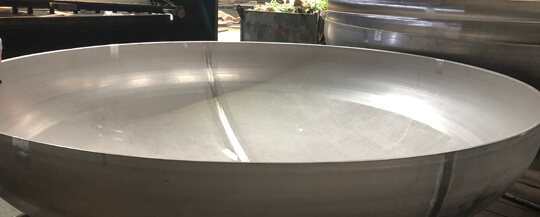In the abolished JB741-80, the restriction on the position of the welding seam of the head was specified. The starting point is to keep the welded seam as far as possible from the corner transition area with large tensile deformation when the head is stamped, so as to avoid the welding seam. It is broken at large deformation.
After years of practice, it has been proven that there are two problems with this restriction:
1. It is easy to cause material waste.
2. The quality of the weld after deformation cannot be ensured, and the quality of the weld after deformation shall be judged by the results of non-destructive testing. According to this, GB150--89 and 98 have eliminated this position restriction, but require the head to be welded first and then formed. The welded seam should be subjected to 100% ray or ultrasonic inspection after the weld is formed, and its qualification level should be the same as that of the entire container. Consistent. JB/T4737-95 should be consistent with GB150, but due to the negligence of the editor, the terms of JB741-80 are still used, which is inappropriate. The National Pressure Vessel Standardization Technical Committee has decided to stop using JB/T4734-95, and is currently preparing a new head standard to replace it. In the current transitional stage, the requirements for joint welding of heads are subject to GB150.
There are no prohibitions and requirements on T-shaped welds and regulations. In fact, it is impossible to prohibit, because the intersection of the longitudinal weld and the circumferential weld of the cylinder belongs to the T-shaped weld.
